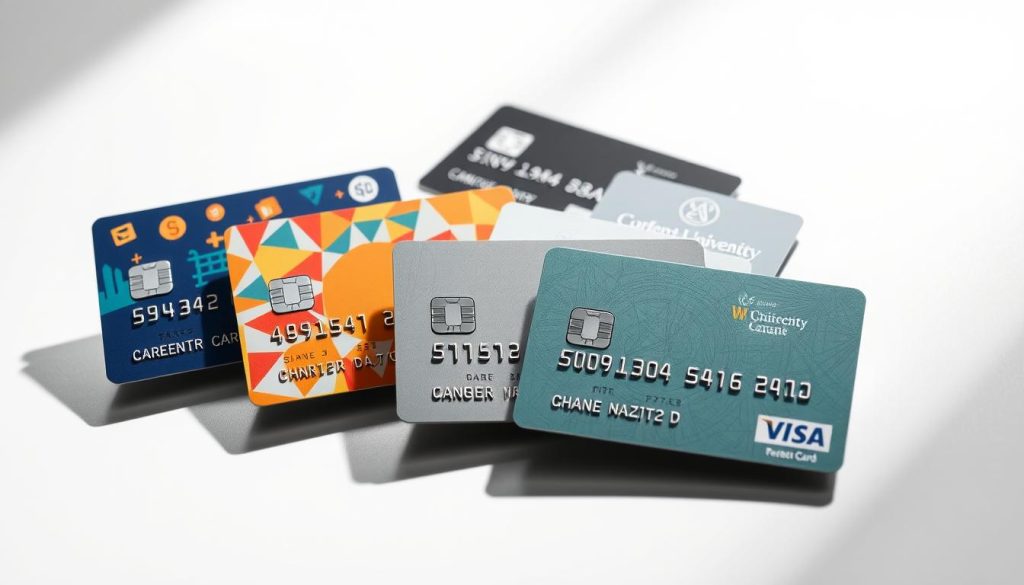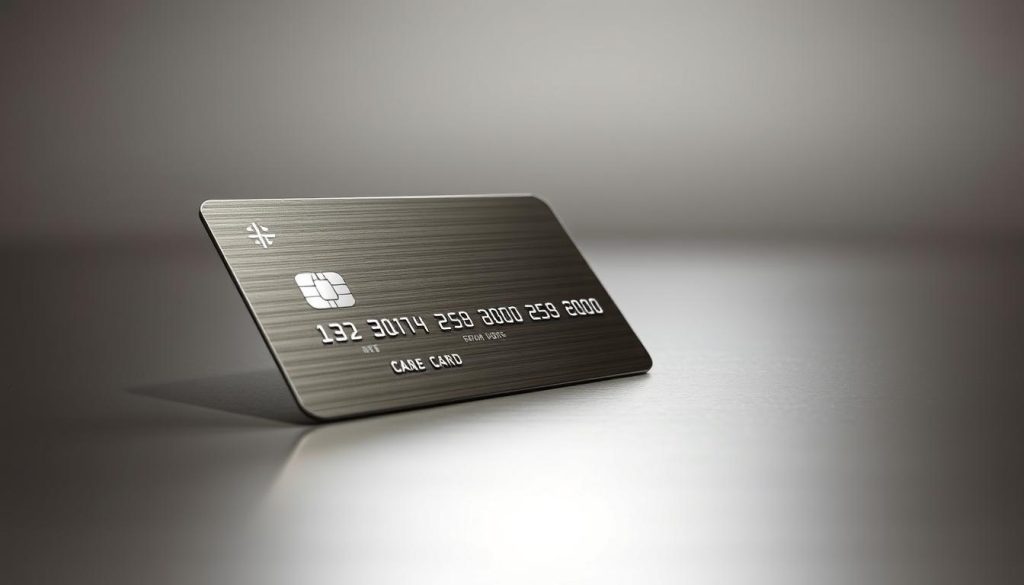When you use your credit cards, you might not know about the fees they come with. This includes annual fees and interest. It’s important to understand these to make smart choices with your cards and save money. With many Americans having several cards, knowing the costs is key.
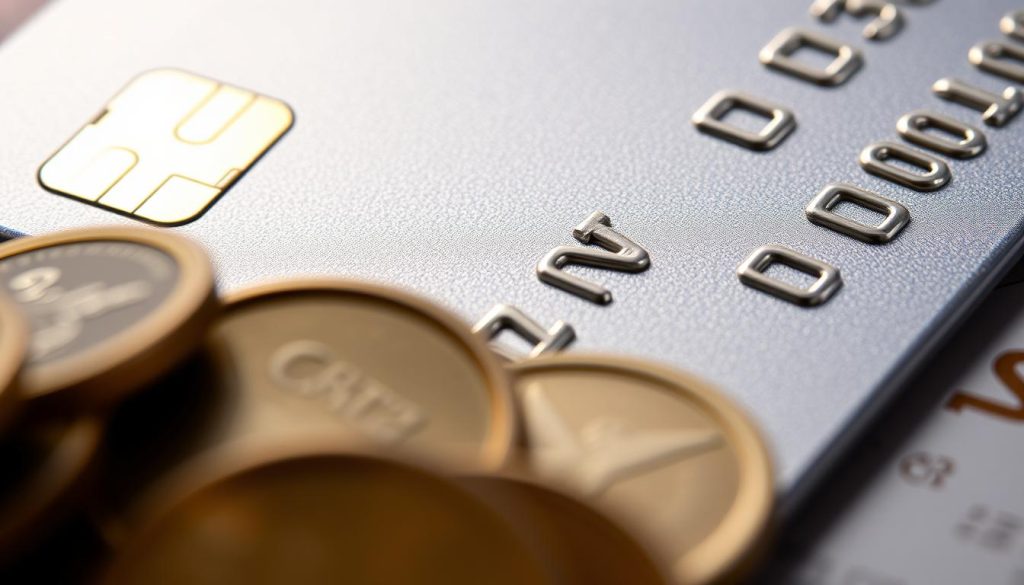
By managing your money well, you can dodge extra fees and interest. Knowing about different fees, like annual ones, helps you use your cards wisely. You’ll learn how to spot and skip unnecessary fees, taking charge of your finances and cutting down on costs.
Key Takeaways
- Understanding credit card fees is crucial to making informed decisions about your credit card usage.
- Credit card fees, including annual fees, can add up quickly if not managed properly.
- Being aware of the potential costs involved with credit card usage can help you minimize unnecessary expenses.
- Taking control of your finances is key to avoiding unnecessary credit card fees and credit card interest.
- Identifying and avoiding unnecessary fees will help you reduce your credit card fees and make smart decisions about your credit card usage.
The Rising Impact of Credit Card Fees in Today’s Economy
Understanding credit card fees is key in today’s world. Late payment fees and interest rates can quickly increase your debt. Many credit card companies have raised their fees to stay competitive.
This change has led to more spending on fees. Here are some numbers to show you:
- Average credit card fees have gone up by 10% in the last year
- More than 50% of users have paid late payment fees at least once in the past year
- The total spent on credit card fees is now over $10 billion a year
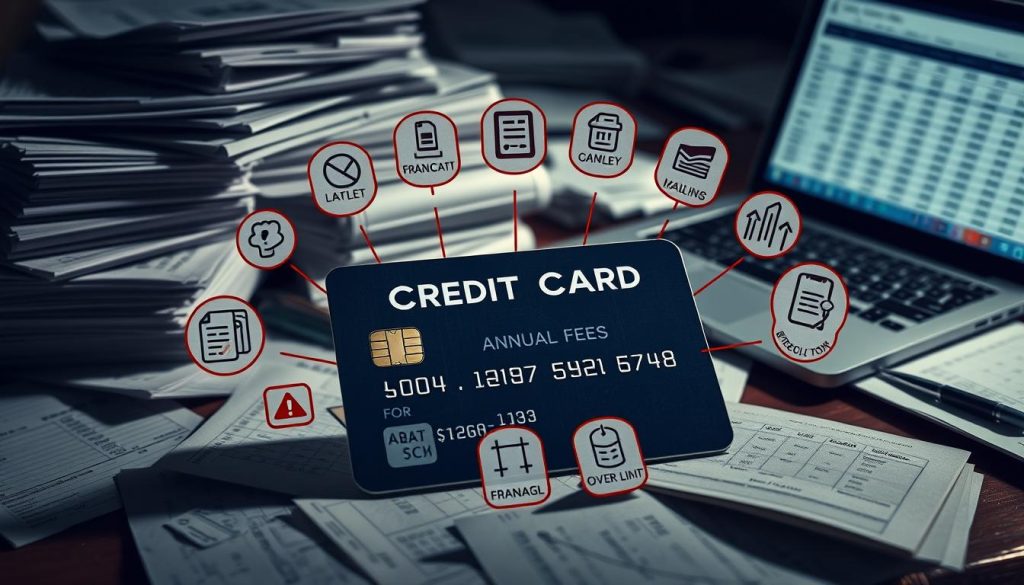
More people are now aware of the fees and their effects. This awareness has led to new rules to control these fees. Knowing about these fees helps you use your credit card wisely and avoid high interest rates and late payment fees.
Common Types of Credit Card Fees You Should Know
As a credit card user, knowing about different fees is key. Foreign transaction fees can quickly add up, especially if you travel or shop online internationally. These fees are usually between 1% to 3% of the purchase amount. To dodge these fees, look for a card with no foreign transaction fees.
Balance transfer fees are another fee to keep an eye on. When you move a balance to another card, you might face a fee, often 3% to 5% of the amount moved. Always check your card’s terms to know the balance transfer fees.
Cash advance fees can also be pricey. Cash advances let you get cash from an ATM with your card, but they come with high fees and interest. These fees are usually 3% to 5% of the amount taken out, plus interest.
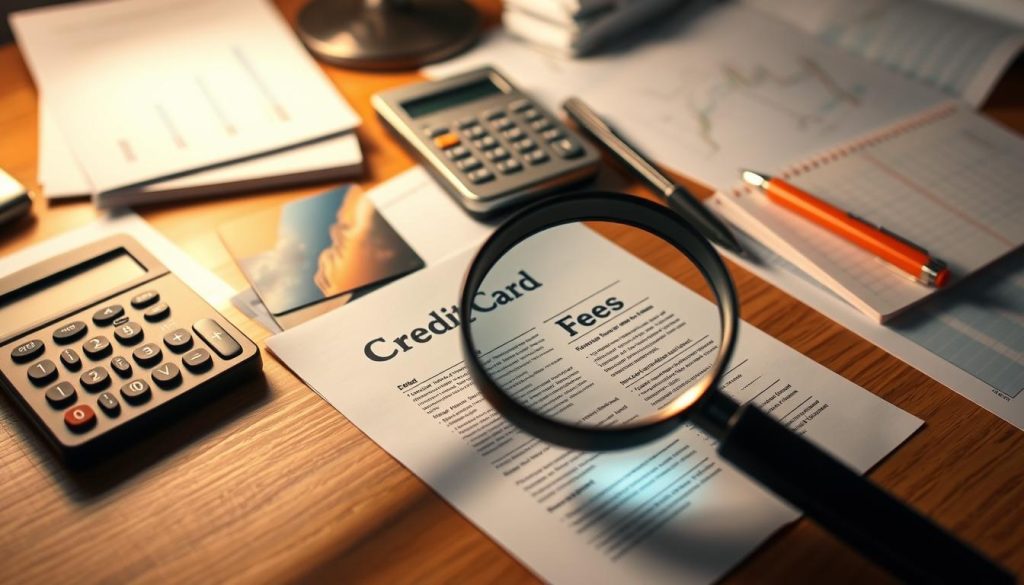
To cut down on credit card fees, it’s vital to understand your card’s terms. Knowing about foreign transaction, balance transfer, and cash advance fees helps you make smart choices. Look for a card with no foreign transaction fees. Also, check your card’s terms to know about balance transfer and cash advance fees.
Hidden Credit Card Fees That Could Be Costing You Money
When you look at your credit card terms, it’s key to know about the fees and agreements. You might be shocked to see how fast some fees can add up. This can really impact your money situation. So, it’s important to read the fine print and understand the terms and conditions.
Some fees can be avoided if you make smart choices. For example, if you’re thinking about a balance transfer, check the terms carefully to avoid extra fees. Foreign transaction fees can also cost a lot, especially if you travel a lot. Knowing the terms and fees can help you use your credit card wisely and avoid extra charges.
- Foreign transaction fees: These fees can range from 1% to 3% of the transaction amount.
- Balance transfer fees: These fees can be a flat rate or a percentage of the transferred amount.
- Cash advance fees: These fees can be higher than regular purchase fees and may have additional interest charges.
- Credit limit increase fees: Some credit card issuers may charge a fee for increasing your credit limit.
By knowing about these hidden fees and understanding your credit card agreements, you can manage your money better. This way, you can make smart choices about using your credit card.
Smart Strategies to Minimize Your Credit Card Fees
To cut down on credit card fees, look for cards with credit card rewards programs. These can help balance out any fees. You earn points or cashback on your buys, making the card cheaper to use.
Also, use credit card benefits like purchase protection and travel insurance. These perks can add a lot of value. They make the cost of fees worth it.
When picking a credit card, aim for fee-free credit cards. These cards don’t charge annual fees or other costs. Here are some tips to help you:
- Choose a card with rewards that match your spending.
- Find a card with a 0% intro APR to avoid interest charges.
- Opt for a card with no foreign transaction fees for international buys.
By using these strategies, you can reduce your credit card fees. Always check your card’s agreement to know about any fees.
Breaking Down Annual Percentage Rates (APR) and Interest Charges
Understanding credit cards means knowing about Annual Percentage Rates (APR) and interest charges. The APR shows the yearly cost of borrowing money, as a percentage. Knowing the difference between variable and fixed APR helps you use your credit card wisely.
Navigating Variable and Fixed APR
Variable APR credit cards have rates that can change over time. These changes often follow the prime rate or economic shifts. Fixed APR cards, however, keep the same rate for the card’s life. Knowing your card’s APR type helps you plan your payments and finances better.
Maximizing Grace Period Benefits
Many cards offer a grace period. This is the time between when your bill closes and when it’s due. If you pay in full during this time, you avoid interest on new purchases. Using this period wisely can help you manage debt and lower interest costs.
Demystifying Interest Calculation Methods
Credit card companies use different ways to figure out interest, like the average daily balance or adjusted balance. Knowing these methods helps you understand how interest is calculated. It also shows ways to lower your interest payments.
Learning about APR and interest charges helps you make better credit card choices. It keeps your finances healthy and secure for the future.
FAQ
What are the common types of credit card fees I should be aware of?
Common credit card fees include annual, balance transfer, cash advance, foreign transaction, and late payment fees. Always check your card’s terms to know the fees you’ll face.
How can I avoid unnecessary credit card fees?
To dodge extra fees, pick a card with no annual fee. Stay away from cash advances and pay on time to avoid late fees. Also, use your card for domestic purchases to avoid foreign transaction fees.
What are some hidden credit card fees that could be costing me money?
Hidden fees include foreign transaction, balance transfer, cash advance, and credit limit increase fees. Always read the fine print to avoid these charges.
How can I minimize the impact of credit card fees on my finances?
Use credit card rewards and benefits to your advantage. Look for fee-free cards. These strategies can help offset the costs of credit card fees.
What is the difference between variable and fixed APR on credit cards?
Variable APR changes with the market, while fixed APR stays the same. Knowing your APR helps manage interest and avoid debt.
How do grace periods work on credit cards, and how can they benefit me?
Grace periods let you pay your balance in full without interest. Using them wisely can save you money and help manage your card better.
